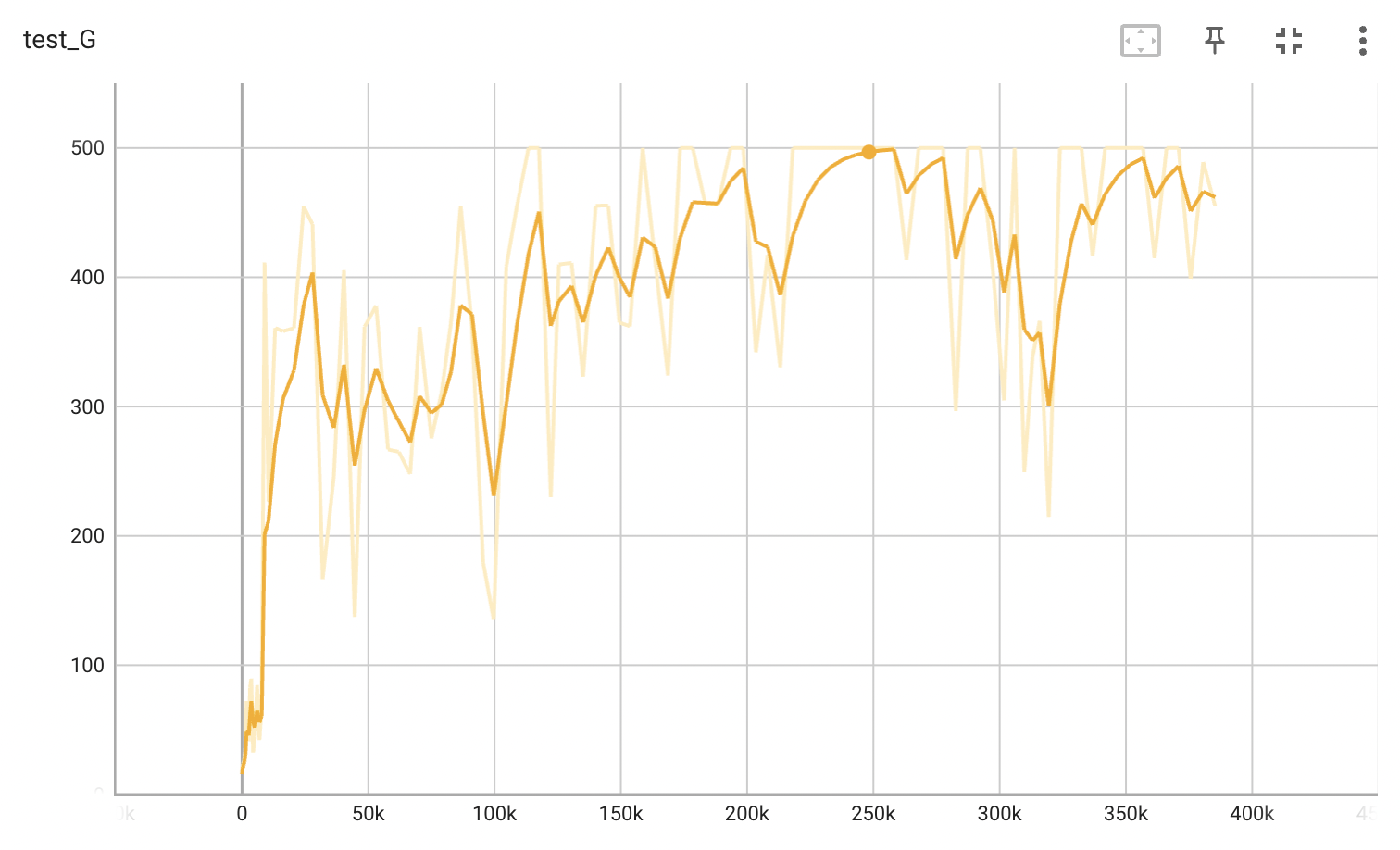Adding MuZero into RL Toolkits at Ease


MUAX 😘
Muax provides help for using DeepMind’s mctx on gym-style environments.
Installation
You can install the released version of muax through PyPI:
pip install muax
Getting started
Muax provides some functions around mctx’s high-level policy muzero_policy. The usage of muax could be similar to using policies like DQN, PPO and etc. For instance, in a typical loop for interacting with the environment, the code is like(code snippet from muax/test):
random_seed = 0
key = jax.random.PRNGKey(random_seed)
obs, info = env.reset(seed=random_seed)
done = False
episode_reward = 0
for t in range(env.spec.max_episode_steps):
key, subkey = jax.random.split(key)
a = model.act(subkey, obs,
num_simulations=num_simulations,
temperature=0.) # Use deterministic actions during testing
obs_next, r, done, truncated, info = env.step(a)
episode_reward += r
if done or truncated:
break
obs = obs_next
Check cartpole.ipynb for a basic training example(The notebook should be runnable on colab).
1.To train a MuZero model, the user needs to define the representation_fn, prediction_fn and dynamic_fn with haiku. muax/nn provides an example of defining an MLP with single hidden layer.
import jax
jax.config.update('jax_platform_name', 'cpu')
import muax
from muax import nn
support_size = 10
embedding_size = 8
num_actions = 2
full_support_size = int(support_size * 2 + 1)
repr_fn = nn._init_representation_func(nn.Representation, embedding_size)
pred_fn = nn._init_prediction_func(nn.Prediction, num_actions, full_support_size)
dy_fn = nn._init_dynamic_func(nn.Dynamic, embedding_size, num_actions, full_support_size)
2.muax has built-in episode tracer and replay buffuer to track and store trajectories from interacting with environments. The first parameter of muax.PNStep (10 in the following code) is the n for n-step bootstrapping.
discount = 0.99
tracer = muax.PNStep(10, discount, 0.5)
buffer = muax.TrajectoryReplayBuffer(500)
3.muax leverages optax to build optimizer to update weights.
gradient_transform = muax.model.optimizer(init_value=0.02, peak_value=0.02, end_value=0.002, warmup_steps=5000, transition_steps=5000)
4.Now we are ready to call muax.fit function to fit the model to the CartPole environment.
model = muax.MuZero(repr_fn, pred_fn, dy_fn, policy='muzero', discount=discount,
optimizer=gradient_transform, support_size=support_size)
model_path = muax.fit(model, 'CartPole-v1',
max_episodes=1000,
max_training_steps=10000,
tracer=tracer,
buffer=buffer,
k_steps=10,
sample_per_trajectory=1,
num_trajectory=32,
tensorboard_dir='/content/tensorboard/cartpole',
model_save_path='/content/models/cartpole',
save_name='cartpole_model_params',
random_seed=0,
log_all_metrics=True)
The full training script:
import muax
from muax import nn
support_size = 10
embedding_size = 8
discount = 0.99
num_actions = 2
full_support_size = int(support_size * 2 + 1)
repr_fn = nn._init_representation_func(nn.Representation, embedding_size)
pred_fn = nn._init_prediction_func(nn.Prediction, num_actions, full_support_size)
dy_fn = nn._init_dynamic_func(nn.Dynamic, embedding_size, num_actions, full_support_size)
tracer = muax.PNStep(10, discount, 0.5)
buffer = muax.TrajectoryReplayBuffer(500)
gradient_transform = muax.model.optimizer(init_value=0.02, peak_value=0.02, end_value=0.002, warmup_steps=5000, transition_steps=5000)
model = muax.MuZero(repr_fn, pred_fn, dy_fn, policy='muzero', discount=discount,
optimizer=gradient_transform, support_size=support_size)
model_path = muax.fit(model, 'CartPole-v1',
max_episodes=1000,
max_training_steps=10000,
tracer=tracer,
buffer=buffer,
k_steps=10,
sample_per_trajectory=1,
num_trajectory=32,
tensorboard_dir='/content/tensorboard/cartpole',
model_save_path='/content/models/cartpole',
save_name='cartpole_model_params',
random_seed=0,
log_all_metrics=True)
5.After the training is done, one can use tensorboard to check the training procedure.
%load_ext tensorboard
%tensorboard --logdir=tensorboard/cartpole
In the figure below, the model is able to solve the environment in ~500 episodes, ~30k updates 
6.We can also have more tests with the best parameter
from muax.test import test
model = muax.MuZero(repr_fn, pred_fn, dy_fn, policy='muzero', discount=discount,
optimizer=gradient_transform, support_size=support_size)
model.load(model_path)
env_id = 'CartPole-v1'
test_env = gym.make(env_id, render_mode='rgb_array')
test_key = jax.random.PRNGKey(0)
test(model, test_env, test_key, num_simulations=50, num_test_episodes=100, random_seed=None)
Alternatively, the users could easily write their own training loop. One example is from cartpole.ipynb
More examples can be found under the example directory.
Enjoy Reading This Article?
Here are some more articles you might like to read next: